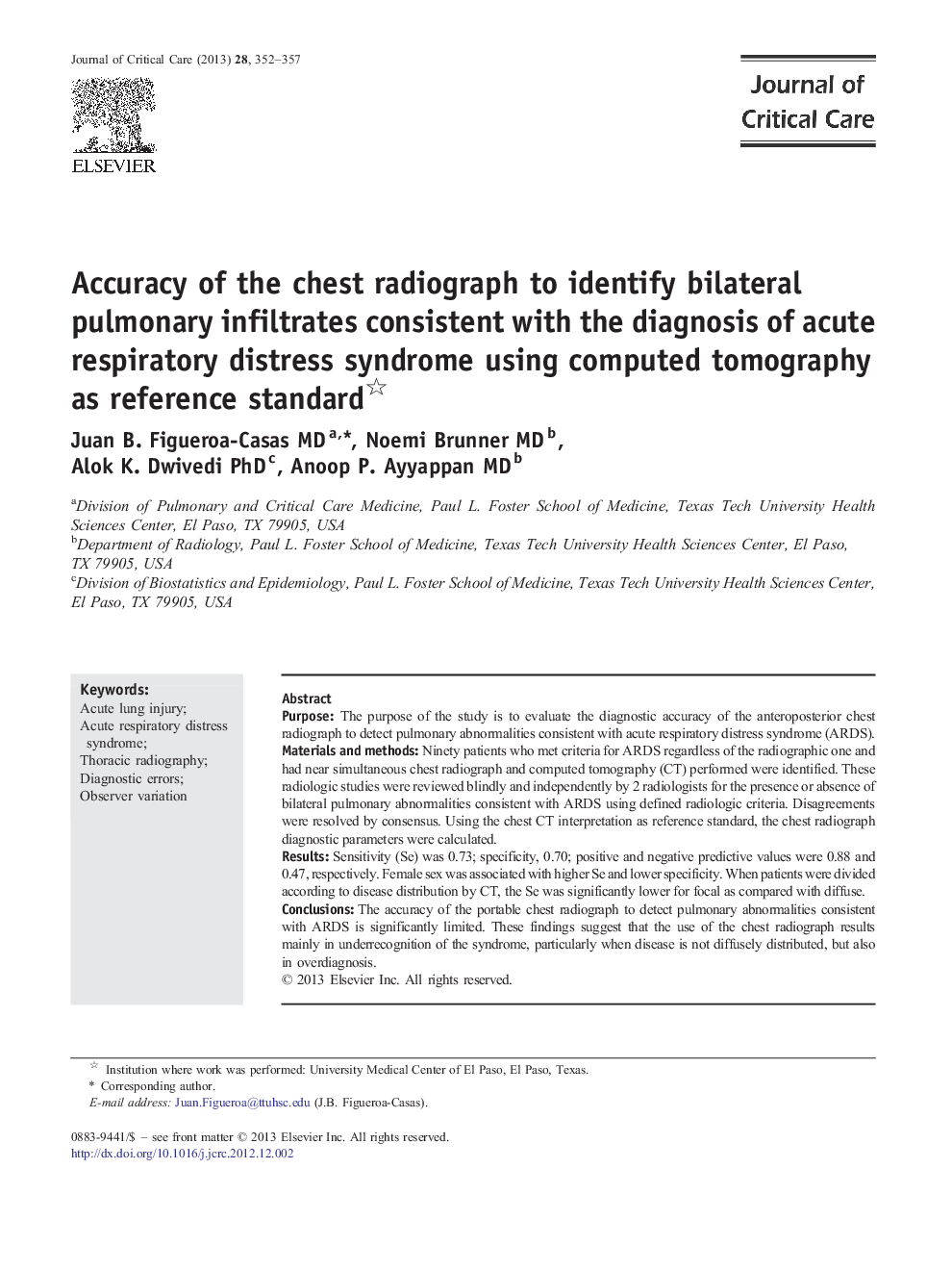| Article ID | Journal | Published Year | Pages | File Type |
|---|---|---|---|---|
| 5886074 | Journal of Critical Care | 2013 | 6 Pages |
PurposeThe purpose of the study is to evaluate the diagnostic accuracy of the anteroposterior chest radiograph to detect pulmonary abnormalities consistent with acute respiratory distress syndrome (ARDS).Materials and methodsNinety patients who met criteria for ARDS regardless of the radiographic one and had near simultaneous chest radiograph and computed tomography (CT) performed were identified. These radiologic studies were reviewed blindly and independently by 2 radiologists for the presence or absence of bilateral pulmonary abnormalities consistent with ARDS using defined radiologic criteria. Disagreements were resolved by consensus. Using the chest CT interpretation as reference standard, the chest radiograph diagnostic parameters were calculated.ResultsSensitivity (Se) was 0.73; specificity, 0.70; positive and negative predictive values were 0.88 and 0.47, respectively. Female sex was associated with higher Se and lower specificity. When patients were divided according to disease distribution by CT, the Se was significantly lower for focal as compared with diffuse.ConclusionsThe accuracy of the portable chest radiograph to detect pulmonary abnormalities consistent with ARDS is significantly limited. These findings suggest that the use of the chest radiograph results mainly in underrecognition of the syndrome, particularly when disease is not diffusely distributed, but also in overdiagnosis.
